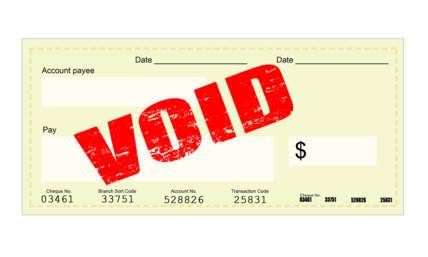How to Find Retained Earnings
The profits a firm has made to date, less any dividends or other distributions given to investors, are referred to as retained earnings. When an entry to the accounting records affects a revenue or expense account, this amount is modified. A large retained earnings balance indicates that the company is financially sound.
A growing firm would typically forgo paying dividends in order to use its retained earnings to fund additional business expansion in areas such as capital expenditures, working capital, acquisitions, research & development, and marketing. It may also choose to pay debt rather than dividends with retained earnings. Another option is that retained earnings are set aside in anticipation of future losses, such as those resulting from the sale of a company or the predicted outcome of a lawsuit.

The Importance of Retained Earnings
Retained earnings are recorded under shareholders' equity, and therefore connect the two accounts, they provide a valuable link between the income statement and the balance sheet.
You can use retaining earnings for purchasing new equipment and machinery, investing in research and development, or engaging in other activities that could help the company thrive. This reinvestment in the business intends to help the company make even more money in the future.
If a firm does not believe it can generate a sufficient return on investment from its retained earnings, it will frequently transfer those earnings to shareholders in the form of dividends or share buybacks.
Managing Retained Earnings
When wealth accumulates in the form of retained earnings, it can be quite challenging to decide how to use it, and therefore is passed to the management team.
However, being the company's primary owners, business shareholders can challenge this with a majority vote. For a variety of reasons, both shareholders and management may want the retained earnings to be held back and might be well-informed about the market and the company's future prospects, indicating that they may have a growth strategy in place that the retained earnings may help fund.
The growth strategy would generate more revenue for the company, which would benefit shareholders by allowing them to receive higher or more frequent dividend payments in the future. However, with additional income, shareholders may believe that the company owes them a regular income as compensation for their initial investment.
Also read: What Are Assets, Liability, and Equity?
How to Find Retained Earnings
Retained earnings are calculated to date, which means they accumulate over time. To begin estimating your current retained earnings, you must first determine what they were at the start of the time period in question which is usually, the previous quarter or year. The beginning retained earnings can be seen on the previous period's Balance Sheet.
The next step is to determine the net income or loss for the current period. It's the amount of money left over after all of your business expenses have been removed from total revenue or sales. On your income statement, you'll locate it.
Finally, you must determine whether or not dividends were paid to shareholders throughout the quarter or the year. If your company currently distributes shareholder dividends, deduct the total amount paid from your previous retained earnings sum. If you don't pay dividends, you can skip this step and enter $0 in the retained earnings formula instead.
Also read: Budget For A Small Business

Possible Disadvantages With Finding Retained Earnings
While knowing your retained earnings is essential for business owners and is required in many cases, it does have certain disadvantages.
For one thing, quarterly retained earnings calculations can produce a biased perspective. Your retained earnings may vary significantly from one quarter to the next if your business is seasonal, such as lawn care or snow removal. As a result, the estimate may fall short of providing a thorough picture of your financial situation.
Another significant drawback is when your retained profits are excessively high. Excessively high retained earnings may suggest that your company isn't spending wisely or reinvesting enough in expansion. Investing red flags include a lack of investments and unproductive spending.
Calculating your retained earnings, on the other hand, is an important element of identifying and correcting problems like this. You must interpret retained earnings in light of your business realities, and you'll be well on your way to increasing profits and expanding your company.
Also read: Is Debt Management Important?
Retained Earnings and Revenue
It's very easy to mix up retained earnings with revenue, but there are some differences that you can keep in mind to help differentiate between the two.
Retained earnings, as previously stated, are the total profit to date less any dividends paid.
The revenue generated by the sale of products or services is referred to as revenue. It is the entire capital generated by a company's gross sales. It doesn't account for costs, expenses, or dividends.
Revenue is usually calculated on a period-by-period basis. This differs from retained earnings, which are calculated on a year-to-date basis.
Also read: Pay Rent With a Credit Card
Retained Earnings and Dividends
Dividends can be paid in cash or in the form of shares to shareholders. Both methods of payment diminish the amount of money left over after taxes.
Dividend payments are recorded as net reductions by accountants, resulting in a cash outflow. Because the company's asset worth on the balance sheet is smaller, retained earnings are a lower amount.
With stock dividends, a portion of the retained earnings is converted to common stock. For example, if a company pays a dividend of one share for each share held by investors, the price per share may fall as the number of shares grows.
The increase in shares does not change the balance sheet, but it does lower the per-share valuation. This is reflected in capital accounts, which have an impact on retained earnings.
Also read: What Does A Controller Do?

Summary
It is very important that businesses find their retained earnings as it will make it possible to expand into a market internationally and will also offer opportunities for developing new products. Therefore, calculating the retained findings will allow your company to grow which is the most important thing for any company – and once you know how to do it you will be wondering why you have waited this long.
If you haven't got the most efficient way to produce pay stubs, then check out our pay stub maker today. So simple and convenient!















